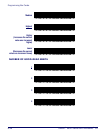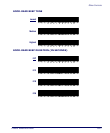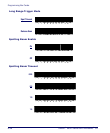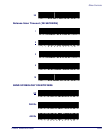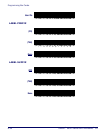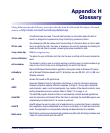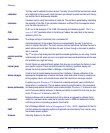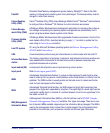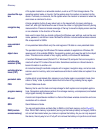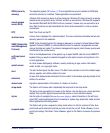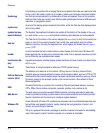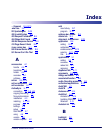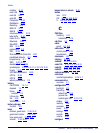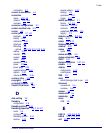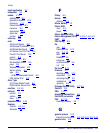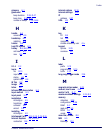
Glossary
H-4
Falcon
®
4400 Series with Windows
®
CE
mounted file sys-
tem
A file system located on a removable medium, such as a PC Card storage device. The
operating system loads, or mounts, the file system when the medium is inserted into the
device. It unloads, or unmounts, the file system when the medium is removed or when the
user issues a command to do so.
navigation key
A large navigation button (4-way rocker key) on the keypad with 4 arrows: pointing up,
down, left, and right that allows the user to move the cursor or highlighted text entry during
menu selection. Press and release one edge of the key to move the display screen one line
or one character in the direction of the arrow.
Network ID
Here used to mean that you should configure the Windows user settings, such as the user
name, password, and domain name. Microsoft’s definition includes some wireless network
IDs as equivalent to SSIDs.
non-persistent
state
A non-persistent state affects only the next keypress. FN state is a non-persistent state.
object store
The persistent storage that Windows CE makes available to applications. Windows CE
reserves part of its available RAM for the operating system and uses the rest for the object
store. This data can be stored in files, registry entries, or Windows CE databases.
portable data
assistant (PDA)
A handheld Windows-based (Pocket-PC or Windows CE) computer that can be synchro-
nized with a host PC to share files and data. Sometimes contains an infrared device to
beam information to another unit.
portable data ter-
minal (PDT)
An industrial strength handheld computer with a keypad, navigation keys, and a bar code
scanner used in inventory, retail, and warehouse activities to collect data and upload it to a
host PC.
persistent state
A state which is maintained after releasing a key. Alpha mode is a persistent mode. Also
called a “sticky” state. A persistent state must be turned off by pressing the key again.
PRG Product Reference Guide.
program memory
Memory that is used for stack and heap storage for both system and nonsystem applica-
tions. Nonsystem applications are taken from storage memory, uncompressed, and loaded
into program memory for execution.
RF card
A small card shaped device installed in a Falcon that allows wireless connection and com-
munication with a network.
QRG Quick Reference Guide.
RAM (random
access memory)
You can add applications and data files to RAM or into Flash memory via the
FlashFX
Disk. While Flash memory is persistent (as long as the backup battery is charged), RAM is
not and will be cleared when you remove or replace the battery. As you can only suspend
the device, the only way to turn it fully off is to remove the battery or to perform a cold reset.



